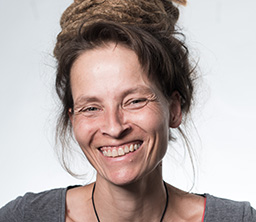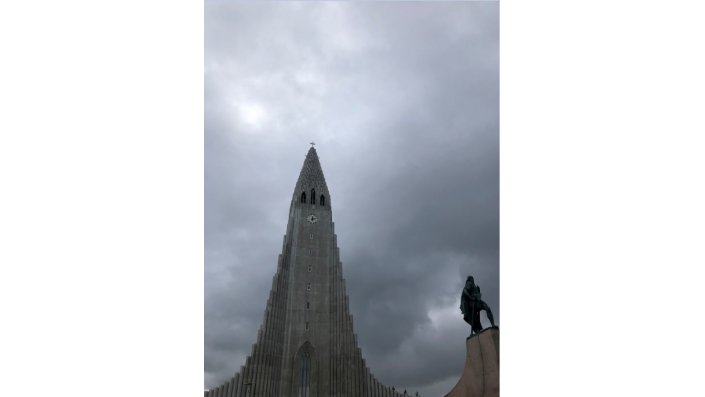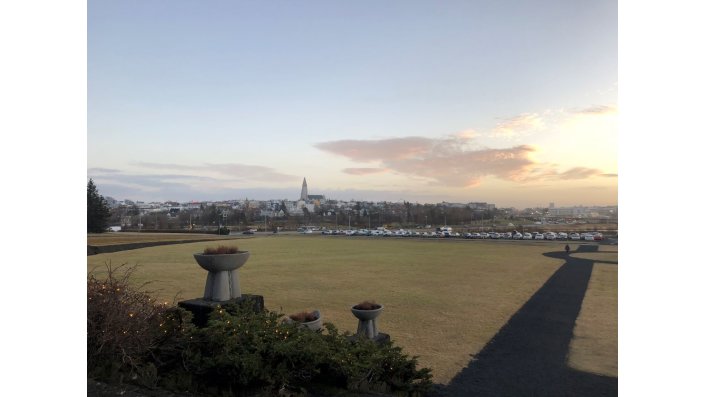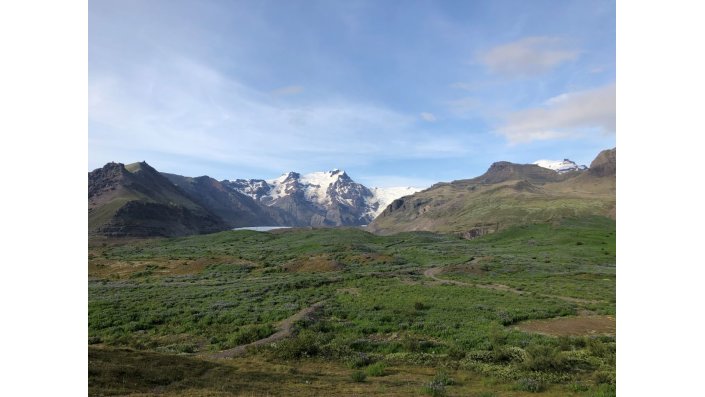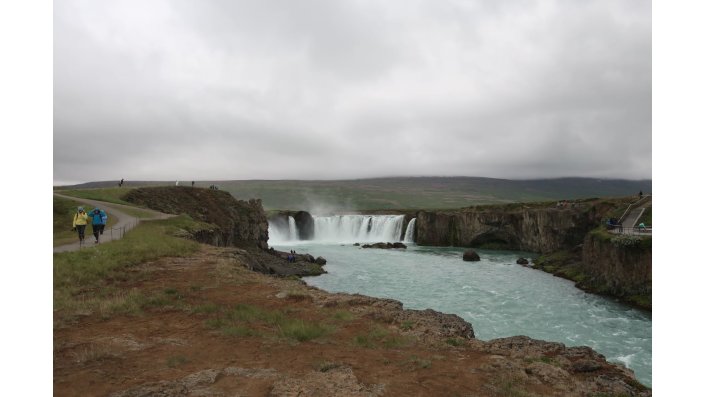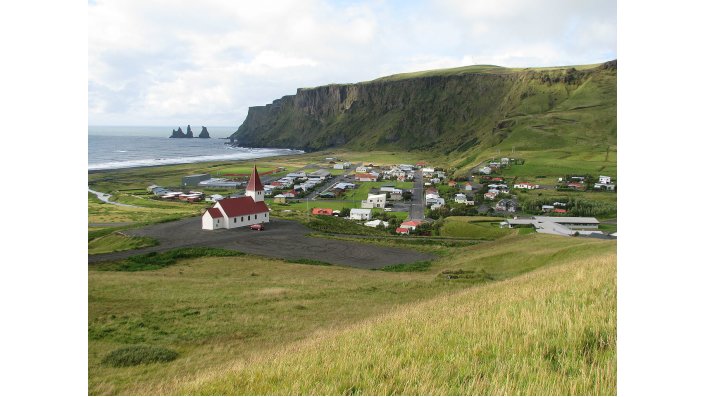Partner Universities of the Month (September 2020)

Beginning of the year: time for something new! We would like to start this year with a new section – the partner universities of the month. Every month, the Department of International Affairs will present one European and one non-European partner university. By presenting, we would like to inform you about the many possibilities you have when going abroad during your studies.
At the beginning of the calendar winter semester we travel to the University of Iceland on the largest volcanic island on earth, on the edge of the polar sea and to Western Sydney University in Down Under, where it is slowly heading towards summer.
Europe's Polaris
 The main building of the Háskóli Íslands by architect Guðjón Samúelsson, who also designed Hallgrim's Church in Reykjavík.
(Image: Herbert Ortner)
The main building of the Háskóli Íslands by architect Guðjón Samúelsson, who also designed Hallgrim's Church in Reykjavík.
(Image: Herbert Ortner)
Freezing cold, northern lights, untamed nature, wild seafarers and customs and traditions that are completely foreign to us - if you are to believe tourism brochures, this is the common image of Iceland. This month we are touring, even if only virtually, our partner university in Reykjavik, the capital of Iceland. So let's take a look at how many clichés actually exist in modern Iceland.
The Háskóli Íslands (University of Iceland) is, as its name suggests, the oldest and largest university in the island state. International affairs are also very important here, because for almost 15,000 permanently enrolled students, around 1,300 international exchange students from over 500 partner universities come to Reykjavik every year. Students of TH Köln's Faculty of Information, Media and Electrical Engineering and the Faculty of Process Engineering, Energy and Mechanical Systems also have the opportunity to study here as part of the Erasmus program. At the University of Iceland, they can expect a wide range of offers, embedded in a central campus in the middle of Reykjavik. For example, the "Environment and Natural Resources" program is taught entirely in English. Even the President of Iceland, Ólafur Grímsson, lectures here in the field of political science. If you do not yet speak Icelandic, you are by no means stuck here: Erasmus students can take “Icelandic for Foreigners”.
A lot here makes the student's heart beat faster, be it the extensive green areas, the various gyms on campus, the good connection to the public bus network or the relatively cheap dormitories. Even the ocean is within walking distance of the campus.
However, only the die-hard can lie on the beach and jump into the water. The climate here is oceanic-cool. The daytime temperatures fluctuate between 0 and 3 °C in winter and between 12 and 15 °C in summer, temperatures of over 20 °C are a rarity here. Sunbathing can also be difficult if the sun is in the sky for less than an hour in winter. In summer, however, sun worshipers get their money's worth almost 24 hours a day.
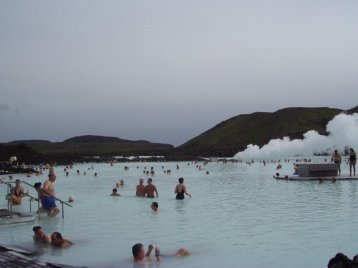 Thermal springs also invite you to swim in cloudy and cold weather in Iceland
(Image: Sascha Gangler)
Thermal springs also invite you to swim in cloudy and cold weather in Iceland
(Image: Sascha Gangler)
Still, you don't necessarily get cold in Reykjavik. On the one hand, this is because the entire city is heated with volcanic geothermal energy and, on the other hand, because there is a lot on offer here culturally, such as the Icelandic bathing culture. The residents here particularly like hot baths that are over 36 °C. Everybody meets in these so-called “hot pots”. In his book “Manual for Iceland” the writer Kristof Magnusson describes such a scene: “She was once sitting in one of the hot pots and chatting with an American who asked her what she did for a living. 'I am President,' replied Vigdís Finnbogadóttir. 'Of which company?' Asked the American, and she replied: 'Of Iceland.'"
The capital of Iceland seems rather small with around 130,000 inhabitants, but then again there are more sheep than people in Iceland. There are around 500,000 fluffy neighbors living nextdoor to around 350,000 Icelanders. Nevertheless, Reykjavik was named European City of Culture in 2000 for a reason. From a purely culinary point of view, there is a lot for meat and fish lovers to discover, such as sheep's blood sausage or fermented shark, which can take up to 12 weeks to prepare, during which it is first buried in the soil and then smoked. It is served with brandy, which is called "Black Death" here. On the musical side, for example, there is the Iceland Airwaves Festival. It's a veritable Who's Who of music. The line-up of artists of all music genres promotes gender-equality. Since 2018, women performed half of the acts. Nevertheless, the modern opera and concert hall "Harpa" is also popular with residents and tourists. Should you still have a wish left unanswered: You can post letters with wishes to Santa Claus in front of the Christmas shop in the city center all year round.
However, if you want to explore the real Iceland, you have to get out of the city and into nature. Sure, everyone has seen pictures of the Northern Lights, geysers or volcanoes, which are numerous in Iceland thanks to its location over two different tectonic plates. But sleeping under the stars with a clear sky, standing in front of a house-high water fountain or bathing in hot springs in icy temperatures, that is something you have to experience yourself. That's why many tourists travel around the country. The so-called Golden Circle, a route in the south and south-west of the country, has proven to be particularly popular. Starting from the capital Reykjavík, you can visit three of the most famous sights of the island in one-day trips. Those who want to travel even further are in luck. There are often organized bus tours for tourists. However, it is often cheaper to take the normal long-distance buses, with which you can drive around almost the whole island.
We can certainly say: there is a bit of truth in every cliché. And there's great adventure to be found in a stay in Iceland!
| Name of University | Háskóli Íslands |
| Erasmus-Code | IS REYKJAV01 |
| Year of Foundation | 1911 |
| Type | public |
| Number of Students | 15,000 |
| Tuition Fee | not applicable within the Erasmus+ program |
| Courses taught in English | |
| Application Deadlines |
September 15, 2020 for the summer semester 2021 March 15, 2021 for the winter semester 2021/22 |
I come from a land down under
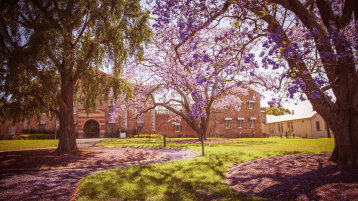 Campus WSU
(Image: WSU)
Campus WSU
(Image: WSU)
A huge apology to all of you who can't get this wonderful song from the 80s out of your head after reading the headline. On the other hand, the song by Men at Work is actually the perfect background music for our non-European partner university of the month in September, which we present here.
After Iceland, we mentally travel to the other side of the globe and take a closer look at Western Sydney University. The university, founded in 1989, offers education for almost 50,000 students, including almost 7,000 international students. At TH Köln there are cooperations with KISD, Cologne Game Lab and the Faculty of Business, Economics and Law. Thanks to the WSU Study Abroad program, students from other faculties also have the opportunity to study at one of the many locations in western Sydney. The locations in the outer districts of the metropolis are usually between 30 and 45 minutes away from the city center.
More Information
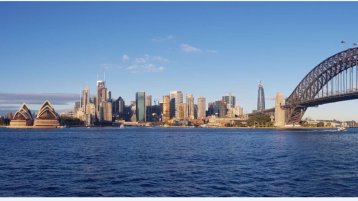 Panorama of Sydney, with the Opera House and Harbour Bridge
(Image: UWS)
Panorama of Sydney, with the Opera House and Harbour Bridge
(Image: UWS)
That's no surprise when you consider the size of Sydney. With 4.5 million inhabitants, around four times as many people live there than in Cologne, in an area ten times the size of our city on the Rhine. It is not unusual for Sydney's outskirts to be a bit further out. The WSU therefore offers a shuttle bus service all day on weekdays so that students can reach and leave their campus more easily. Whether they have to do this at all is a completely different question, as each campus has its own service and leisure facilities and thus functions like a little village.
Sydney, however, should not be missed in spite of all the amenities in the village. Of course, everyone knows the Harbor Bridge and the Opera House, which has been the symbol of the city for decades. If you are already in the area, you should also take the opportunity to visit the old town district "The Rocks". In the former harbor and warehouse district you will find some of the city's oldest pubs and also the open-air market “Rocks Markets”, which offers international and local street food or for example hand-crafted fashion. The traditional Sydney-Hobart regatta takes place in the harbor each year on December 26. In this competition, the participants sail over 2000km to the capital of Tasmania. If you want to experience sport up close, the Sydney Roosters, one of the numerous rugby teams in Sydney, have a lot to offer. Lovers of popcorn and silver screens will have a blast at the Sydney Film Festival at the State Theater. Nature lovers, on the other hand, should not miss the Taronga Zoo, which is home to some Australian animal species, and the Sydney Sea Life Aquarium, considered to be one of the most beautiful aquariums in the world. Many places will offer a special student discount.
Of course, there is a lot more to discover and experience in a metropolis like Sydney. Nevertheless, whoever can should also take advantage of what the city has to offer and explore the surrounding area by train on Sundays for a cheap €2.50. The nearby Blue Mountains National Park invites you to hike and explore its numerous sights, such as the Three Sisters. There are numerous wonderful beaches along the east coast - a paradise not just for surfers and surfers-to-be. If you want a bit more distance between life on campus and your day trips, you will also find interesting destinations with the Great Barrier Reef in the northeast or Uluru in the middle of the uncharted expanse of the Australian outback.
If you would like to feel the sand under your feet again during our winter, enjoy the beach life in your free time, are tired of American and British English or would like to have vegemite on your bread, you should certainly consider putting Down Under at the top of your priority list.
| Name of University | Western Sydney University (WSU) |
| Year of Foundation | 1989 |
| Type | public |
| Number of Students | 48,500 |
|
Cooperation since |
2001 |
| Tuition Fee |
not applicable with student exchange with TH Köln |
| Application Deadlines |
Exchange places of the Department of International Affairs: October 1, 2020 for the summer semester 2021 April 1, 2021 for the winter semester 2021/22 |
September 2020

